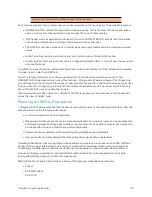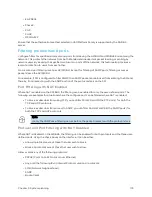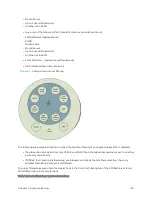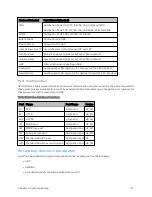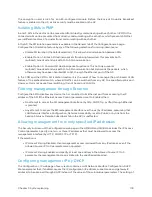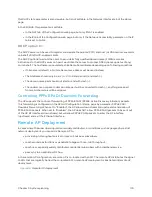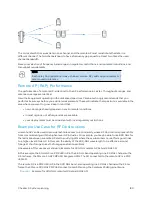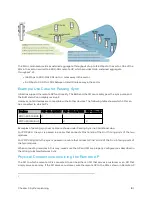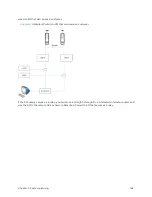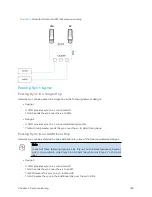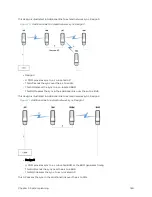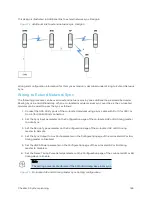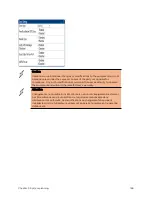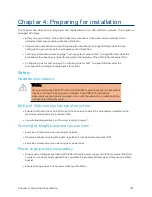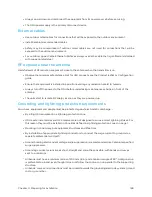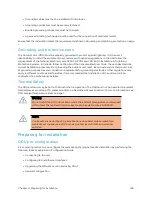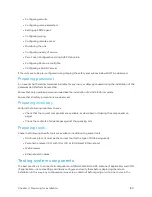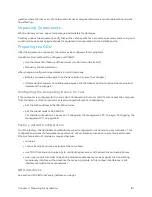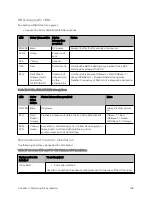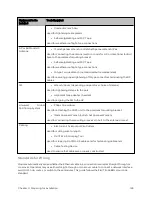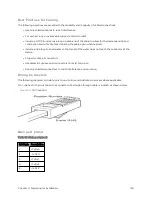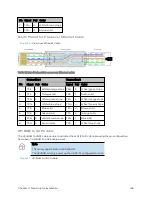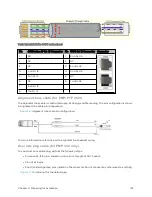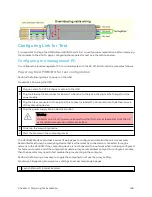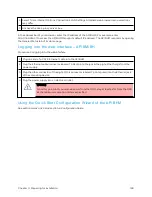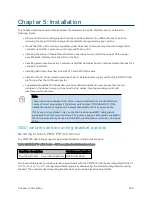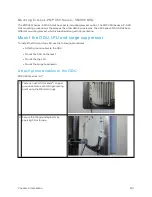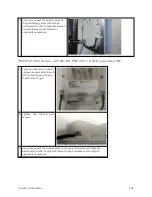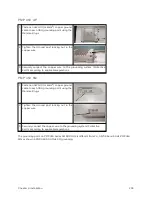
Chapter 4: Preparing for installation
188
l
Always power down and disconnect the equipment from its power source before servicing.
l
The ODU power supply is the primary disconnect device.
Ext er nal cab les
l
Use outdoor rated cables for connections that will be exposed to the outdoor environment.
l
Install Cambium recommended cables.
l
Safety may be compromised if outdoor rated cables are not used for connections that will be
exposed to the outdoor environment.
l
For outdoor copper Cat5e Ethernet interfaces, always use Cat5e cable that is gel-filled and shielded
with copper-plated steel.
RF exp osur e near t he ant enna
Harmful levels of RF radiation are present close to the antenna when the transmitter is on.
l
Observe the minimum safe distance limit for 450 products, see the Product leaflet or Configuration
guide
l
Ensure that equipment is installed in a position avoiding any radiation hazard to humans.
l
Always turn off the power to the ODU before undertaking maintenance activities in front of the
antenna.
l
The units start to radiate RF energy as soon as they are powered up.
Gr ound ing and lig ht ning p r ot ect ion r eq uir em ent s
Structures, equipment and people must be protected against electrostatic discharge: -
l
By siting ODU equipment in a lightning protection zone
l
ODUs, external antennas and GPS receivers are not designed to survive direct lightning strikes. For
this reason they must be installed in Zone B as defined in Lightning protection zones on page 1.
l
Mounting in Zone A may put equipment, structures and life at risk.
l
By installation of appropriate lightning conductors to conduct the surge current to ground via a
separate preferential solid path.
l
Ground bonding and transient voltage surge suppression is recommended. Use Cambium specified
surge suppressors.
l
Grounding conductor runs are as short, straight and smooth as possible, with bends and curves
kept to a minimum.
o
All bends must have a minimum radius of 200 mm (8 in) and a minimum angle of 90°. A diagonal run
is preferable to a bend, even though it does not follow the contour or run parallel to the supporting
structure.
o
All bends, curves and connections must be routed towards the grounding electrode system, ground
rod, or ground bar.
Summary of Contents for PMP 450 Series
Page 92: ...Chapter 2 System hardware 92 Figure 29 MicroPoP Omni antenna implementation pattern Vertical...
Page 134: ...Chapter 3 System planning 134 Figure 51 Mast or tower installation...
Page 135: ...Chapter 3 System planning 135 Figure 52 Wall installation...
Page 136: ...Chapter 3 System planning 136 Figure 53 Roof installation...
Page 137: ...Chapter 3 System planning 137 Figure 54 GPS receiver wall installation...
Page 158: ...Chapter 3 System planning 158 Figure 61 cnMedusa Antenna...

